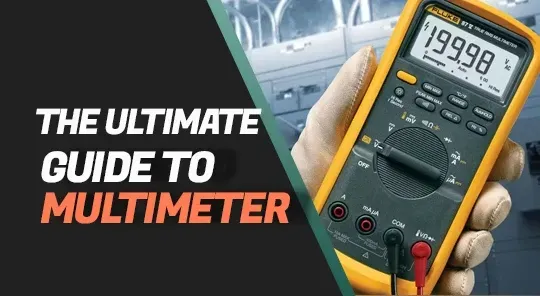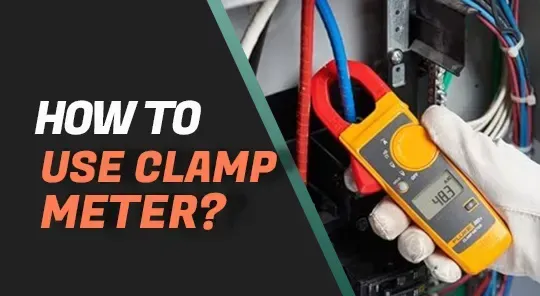A Guide to Choosing the Right Video Borescope for Your Needs
Choosing the Right Video Borescope for Your Needs
Video borescopes have become indispensable tools for various industries, from plumbing and automotive to aviation and construction. These devices offer a unique capability to inspect hard-to-reach areas, providing clear and precise visuals of otherwise hidden spaces. In this article, we'll explore the key factors to consider when selecting the right video borescope for your specific needs.
What is a Video Borescope?
A video borescope is a specialized tool designed for inspecting inaccessible areas such as pipelines, engines, and concealed regions. It consists of a long, flexible probe equipped with a camera and a display unit at either end. The camera on the probe captures clear images and videos of the target area, transmitting them in real-time to the display unit, allowing users to view what the camera sees.New Paragraph
Important Things to Consider When Choosing a Video Borescope
The diameter and length of the probe are critical factors when selecting a video borescope. The probe's length determines how far you can reach, while the diameter dictates the size of the space you can access. It's essential to choose a probe with a suitable diameter for the area you need to inspect. Opt for a smaller-diameter probe when dealing with tight spaces, as it not only improves image quality but can also be more cost-effective. However, bear in mind that smaller-diameter probes tend to come at a higher price point.
The probe's length should also align with your requirements. If you need to inspect longer spaces, select a longer probe. Be aware that longer probes often come at a higher cost, and the available lengths can vary from a few feet to over 100 feet. Make sure the probe's length suits the purpose of your inspection.
Video and Image Quality
When it comes to video borescopes, image and video quality are paramount. To accurately detect faults and details, high-quality imaging is essential. Look for a video borescope with a minimum frame rate of 30 frames per second and a visual resolution of at least 720p HD. A higher resolution will provide better image quality, particularly for identifying minute details. Consider the lighting conditions in the area as well. If it's poorly lit, opt for a borescope with a powerful LED light source that can illuminate the space. Additionally, choose a device with customizable lighting settings to adjust brightness and contrast according to your preferences.New Paragraph
Wireless or Wired
Video borescopes come in both wireless and wired options. Wireless borescopes transmit images wirelessly to a display unit, while wired ones require a cable to connect the probe to the display unit. Wired borescopes are generally more reliable but can be challenging to maneuver in tight spaces due to cable entanglement. On the other hand, wireless video borescopes offer convenience but may be less reliable, especially in areas with interference.
If you opt for a wired video borescope, ensure that the cable length is sufficient to reach the inspection area. If you choose a wireless version, ensure the wireless signal is stable, and the battery life meets your needs. Keep in mind that wireless video borescopes may come at a higher price point than their wired counterparts.New Paragraph
Display Unit
The display unit is the device that receives and showcases the images and videos captured by the probe. It can either be a separate device or integrated into the handle of the probe. It's essential to choose a display unit that is user-friendly and features a clear and bright screen. The screen size can vary from a few inches to over 10 inches, so select a size that suits the application, considering the size of the inspection area.
When the display unit is separate, ensure that the connection to the probe is secure and easy to set up. If you opt for a borescope with an integrated display, confirm that the handle is ergonomic and easy to use.New Paragraph
Extraordinary Qualities
Some video borescopes offer additional features that enhance their usability and versatility. These features may include:
- Still Photographs: Some video borescopes can capture still photos and videos, making documentation and sharing with colleagues or clients more convenient.
- Flexibility: An articulating probe can be bent in various ways, simplifying inspection in hard-to-reach areas.
- Waterproof Probe: A waterproof probe is ideal for use in damp environments, such as pipes, tanks, and underwater inspections.
- Zoom Feature: A zoom feature is helpful for examining minute details and viewing objects from different angles.
- Interchangeable Probes: Certain video borescopes allow you to use the same display unit with multiple probes for various tasks.
Consider these additional features based on your specific application needs when selecting a video borescope.New Paragraph
Two Leading Brands of Video Borescopes
Video borescopes are available from a wide range of brands, each offering unique features and functionalities. Extech and OME-top are two well-known brands in this category. Here are some key models from each brand:New Paragraph
Video Borescopes from Extech
1. Extech BR250-4 Video Borescope
The Extech BR250-4 Borescope is a versatile tool suitable for various tasks, including industrial inspection and vehicle maintenance. It features a 9mm diameter by 1m length probe with four integrated LED lights for clear imaging. This probe is waterproof, making it suitable for moist environments. The 2.4-inch color TFT LCD monitor on the BR250-4 has a resolution of 320 × 240 pixels and can be rotated 180 degrees for better viewing. It also comes with a built-in lithium-ion rechargeable battery for added convenience.
2. High-definition video borescope from Extech
For advanced imaging capabilities, the Extech HDV600 High Definition Video Borescope is an excellent choice. It offers higher picture and video resolution, capable of capturing high-definition still photos and videos. The device boasts a 5.7-inch color LCD screen with a resolution of 640 x 480 pixels. The 5.5mm-diameter probe is available in lengths of up to 10m. The HDV600 includes a built-in lithium-ion rechargeable battery and four adjustable LED lights for optimal lighting.New Paragraph
Video Borescopes from OME
1. OME-top VS70 Video Borescope
The OME-top VS70 Video Borescope is a versatile tool equipped with a 5.5mm diameter probe that can extend up to 30m. Its waterproof design and six movable LED lights enhance its usability in wet environments. The VS70 can capture both still photos and videos and features a 3.5-inch color LCD screen with a resolution of 320 x 240 pixels. It offers zoom functionality for detailed inspections and comes with a built-in rechargeable lithium-ion battery.
2. VTS-07 Video Borescope from OME-top
For more advanced features, consider the OME-top VTS-07 Video Borescope, featuring a 6mm diameter probe and a maximum length of 30m. It boasts a 7-inch color LCD screen with a resolution of 1024 × 600 pixels and can record both still photos and videos. The VTS-07 comes with a built-in rechargeable lithium-ion battery, six adjustable LED lights, and additional functionalities like an articulating probe and the ability to rotate the image 360 degrees. It even allows viewing the image on another device via Wi-Fi.New Paragraph
In Conclusion
Selecting the right video borescope may seem daunting, but by considering these key factors, you can make an informed decision. Take into account the probe's diameter and length, image and video quality, wired or wireless options, display unit characteristics, and any additional features that align with your specific application needs. Choosing the ideal video borescope will enable you to precisely diagnose problems and inspect hard-to-reach areas efficiently, ultimately saving both time and money.New Paragraph






